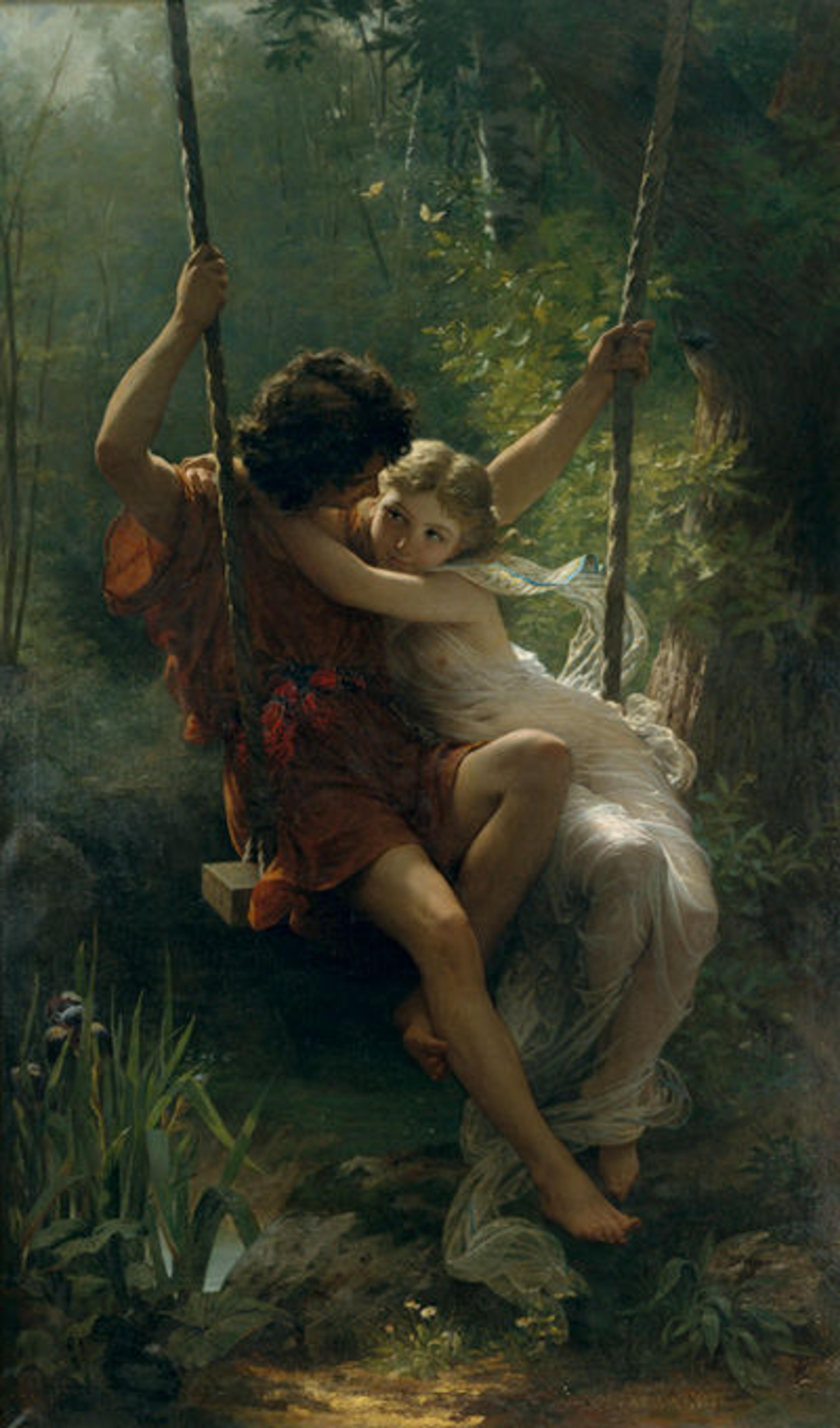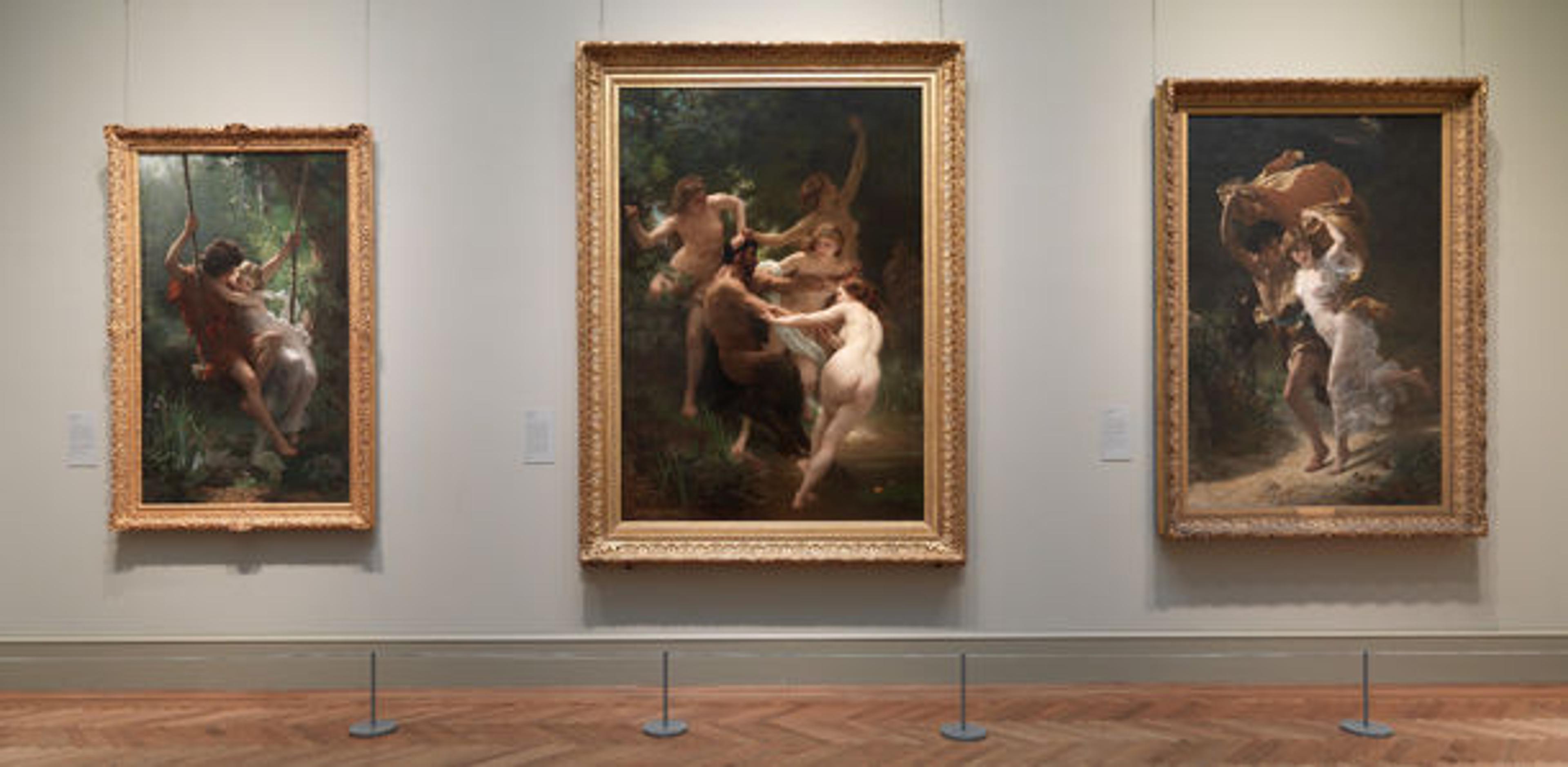Gallery 827 in the European Paintings galleries
«The Teen Advisory Group recently set out to learn about Impressionist art. Captained by Associate Museum Educator Kathy Galitz, we actually began our journey not with Impressionist art itself but with a brief exposé on what is lovingly referred to as "academic" art. Yes, academic.»
The very word fills me with reluctance and dread. Why, oh, why would one subject oneself to the horrors of academia when one could just as easily be drinking the sweet nectar of nineteenth-century French Impressionism? "Monet!" I cry. "Degas! Manet! Save me from this prison! It's so…well, actually, it's beautiful. Absolutely, drop-dead, jaw-on-the-polished-wood-floor beautiful." When Kathy suggested we take a moment to look around gallery 827, I eagerly complied. Who would have thought academic art could be so wonderful? These paintings, which depict historical, biblical, and mythological events, are pristine and immaculate and…so damn pretty. It felt momentous just standing among these works by such painters as Alexandre Cabanel and Pierre-Auguste Cot.

Pierre-Auguste Cot (French, 1837–1883). Springtime, 1873. Oil on canvas; 84 x 50 in. (213.4 x 127 cm). The Metropolitan Museum of Art, New York, Gift of Steven and Alexandra Cohen, 2012 (2012.575)
But then one work, Springtime by Pierre-Auguste Cot, grabbed me, taking me by the neck and just wringing the life right out of me. It's a beautiful narrative, I daresay, featuring two young people in love. The boy, draped in orange fabric, and the girl, quite scandalous in a transparent gown (nudity was a favorite topic among academic painters…make of that what you will), look completely and utterly serendipitous. I yearn to be where they are, to be them, even, surrounded by forest and sitting upon a swing. Not a care in the world. The whole scene is even more touching due to the painter's hyperrealistic style.
I stood before this work and couldn't help but smile, and in that moment I understood why the girl is smiling, and then I smiled wider because I wasn't just admiring a piece of art but connecting with it. I am connected. I'm there. And I have no intention of leaving anytime soon. I've heard this style of art described as "uppity" or "bourgeois" or "gaudy." That may be, but I don't care.
Related Link
Heilbrunn Timeline of Art History: "The Salon and The Royal Academy"
